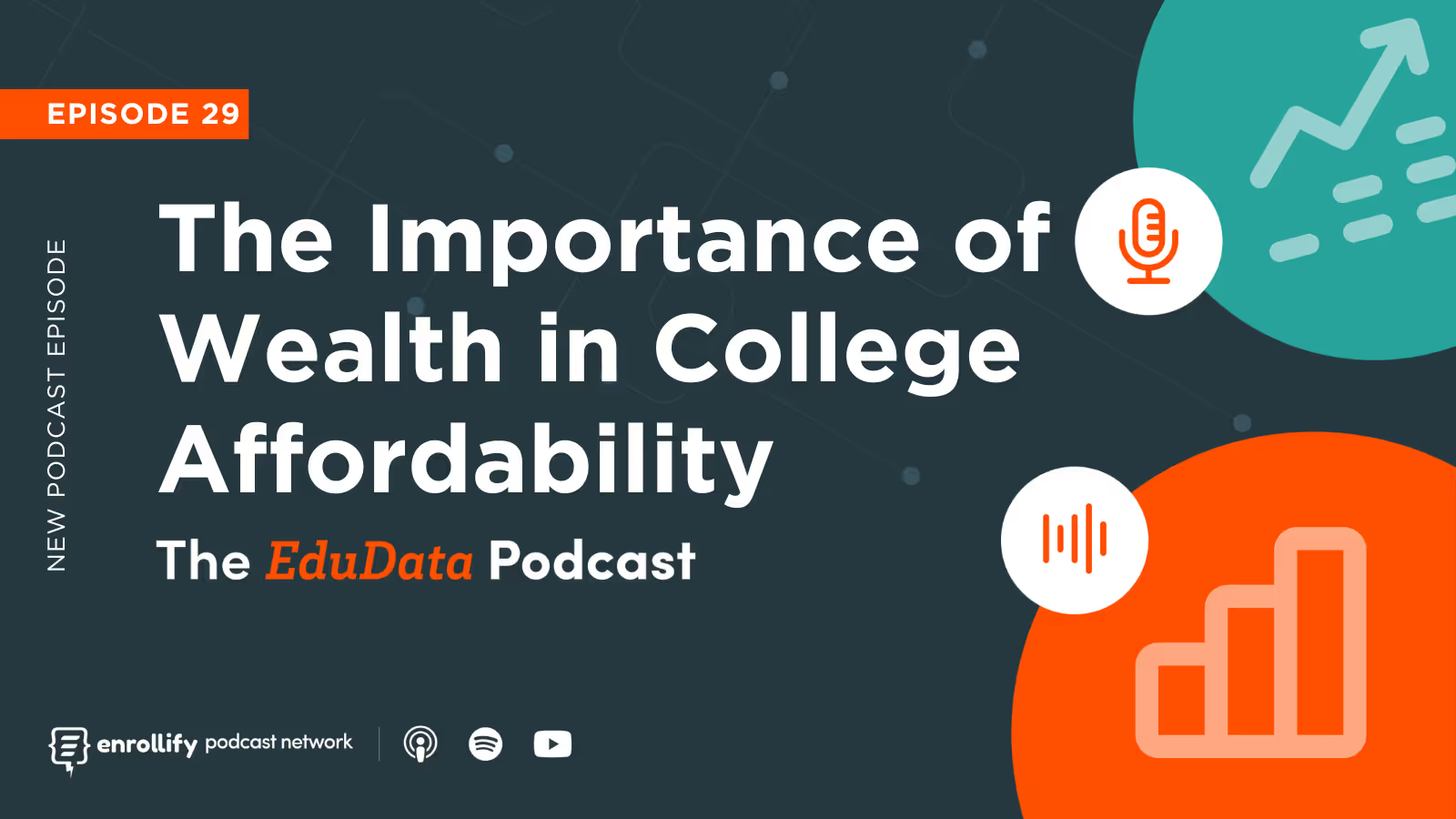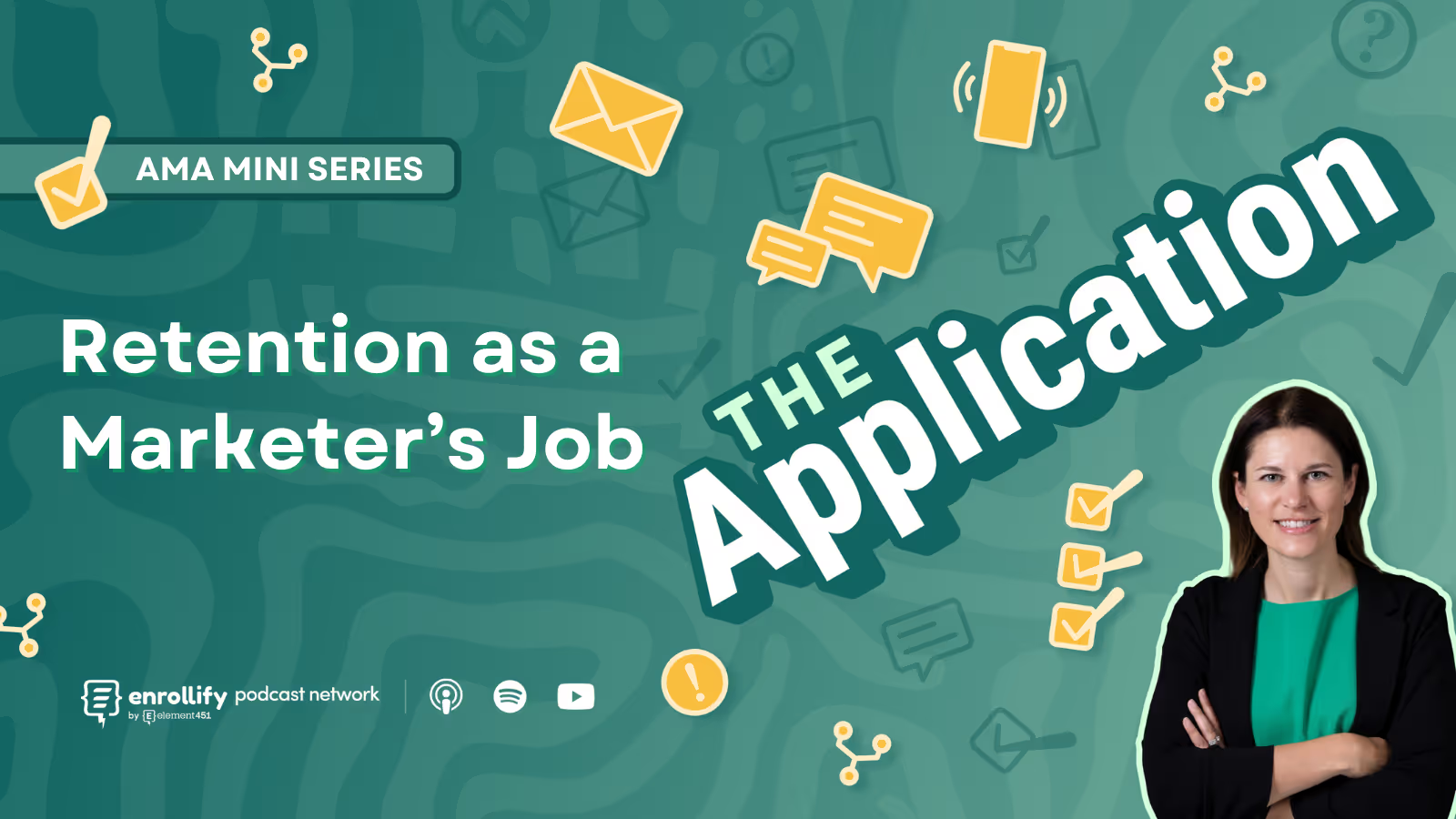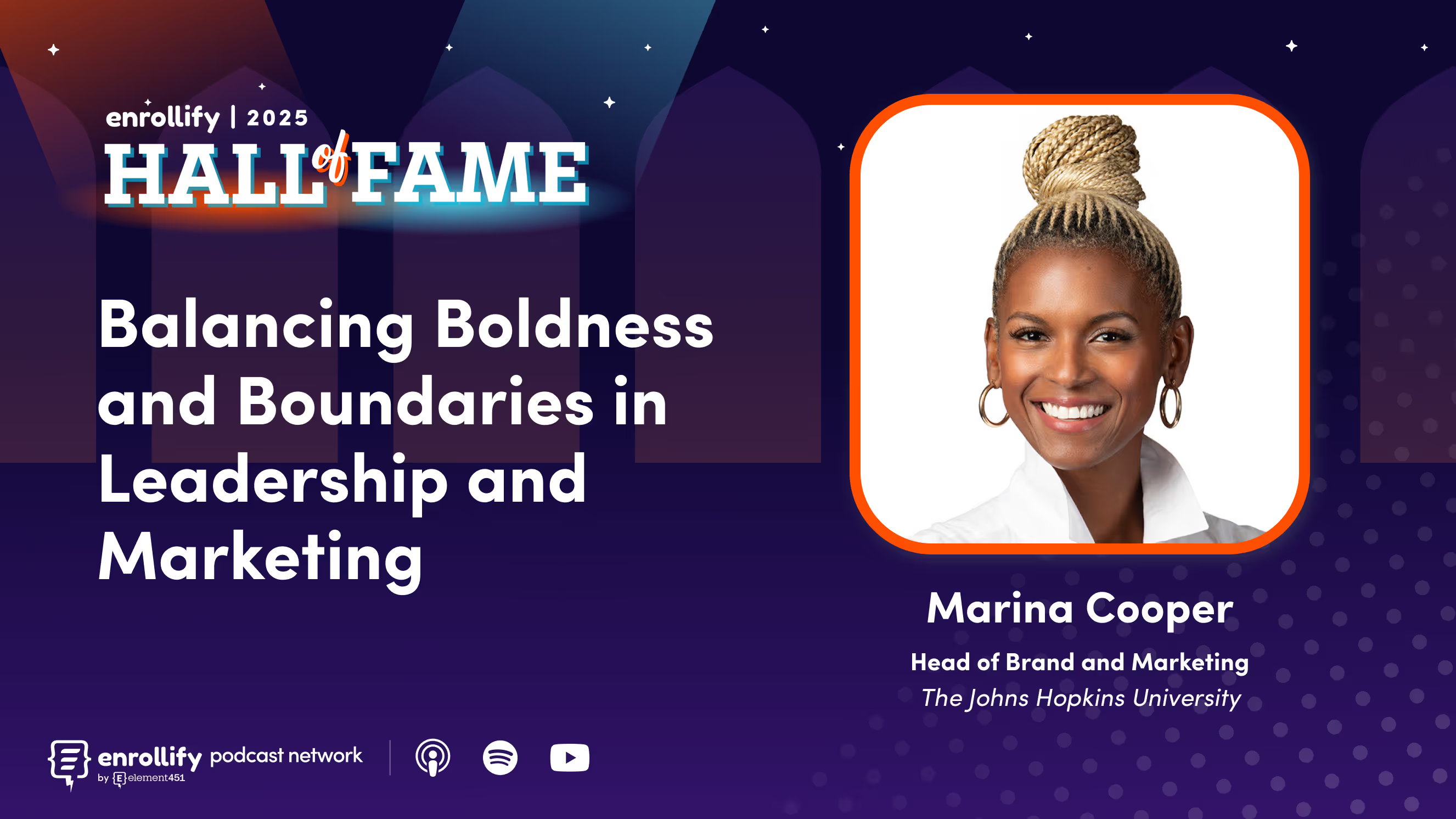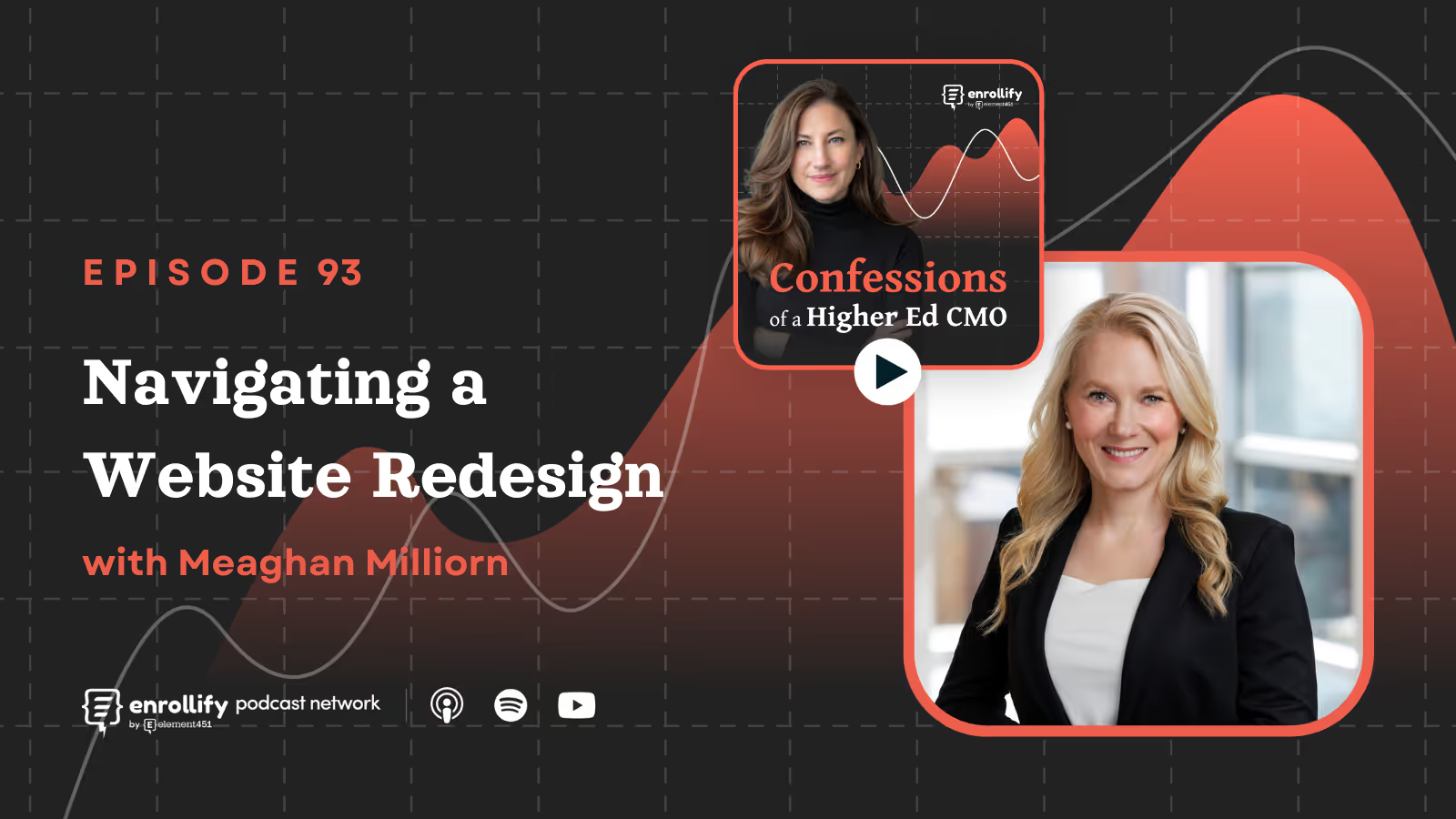About the Episode
About the Episode:
Is “wealth” a better measure of need than family income? A new study finds that assets like savings, property, and investments are a better indicator of a student's ability to cover college costs than income alone. This reinforces the deep and persistent inequalities in wealth by race and ethnicity that we see throughout higher education. The study also suggests actions and resources that higher ed professionals can provide.
Key Takeaways
- Income vs. Wealth: Understanding the Distinction
- Income measures yearly earnings, while wealth represents net worth, including assets like property, savings, and investments.
- Wealth disparities are significantly greater than income disparities, particularly across racial and ethnic lines.
- Wealth is a better predictor of a student's ability to persist in higher education compared to income alone.
- Implications for Higher Education
- Current financial aid models that focus solely on income miss key disparities in wealth, particularly among marginalized groups.
- Wealth enables families to weather financial challenges and access resources that improve educational outcomes.
- Recruitment and admissions policies should consider wealth to better address inequities.
- Actionable Insights for Data Practitioners
- Feature importance modeling can help determine which metrics—wealth, income, or others—have the greatest impact on outcomes.
- Predictive models must include comprehensive data, such as savings, assets, and investments, for better decision-making.
- Generative AI and machine learning can streamline the integration of wealth data into institutional strategies.
Episode Summary
Wealth vs. Income: A Critical Distinction
Jamie and Timothy discuss the study’s central finding: while income gaps between racial groups are concerning, wealth gaps are significantly more pronounced. For instance, the median wealth of white households is 13 times larger than that of Black households, highlighting systemic barriers that persist even when incomes are similar.
Wealth disparities often result from historical inequities, including generational transfer of assets and access to financial opportunities. Unlike income, wealth can be "gamed" through strategic financial planning, further skewing its use in understanding economic realities.
How Wealth Affects Access and Persistence in Higher Education
The hosts explore how wealth directly impacts students’ ability to:
- Cover unforeseen costs without resorting to loans.
- Take advantage of college preparatory resources, such as test prep and tutoring.
- Persist through financial challenges during their academic journeys.
An anecdote shared by Jamie highlights how income-focused admissions policies, such as those at work colleges, can overlook students with significant wealth tied up in assets, creating unintended inequities.
Methodology and Data Sources
The study combines datasets from multiple sources, including IPEDS and government institutions, to link student wealth and income with institutional data and outcomes. This meta-analysis approach demonstrates the potential of joining unrelated datasets to uncover actionable insights.
Key insights from feature importance modeling include:
- Wealth metrics (assets, savings, investments) often outweigh income in predicting student persistence and success.
- Adding wealth data to predictive models enhances their accuracy and fairness, allowing institutions to make more informed policy decisions.
Recommendations for Higher Education
The study suggests actionable steps for addressing wealth disparities, including:
- Expanding Admissions Policies
Focus on wealth as a criterion alongside income to ensure equitable access for low-wealth students. - Developing Targeted Outreach Programs
Create initiatives that build pathways into higher education for students from low-wealth backgrounds, spurring intergenerational mobility. - Incorporating Wealth into Predictive Models
Use wealth as a feature in enrollment and retention models to better allocate resources and predict student needs.
Fun Fact: Why Use Median Instead of Average?
Timothy and Jamie break down why median wealth is used over average wealth. Wealth distributions are heavily skewed by outliers (e.g., billionaires), making the average a misleading representation. The median provides a truer picture of the "middle" value in wealth data, ensuring more accurate insights.
Connect With Our Co-Hosts:
Jamie Boggs
https://www.linkedin.com/in/jamiewboggs/
Timothy Davis
https://www.linkedin.com/in/davis-timothy/
About The Enrollify Podcast Network: The EduData Podcast is a part of the Enrollify Podcast Network. If you like this podcast, chances are you’ll like other Enrollify shows too!
Some of our favorites include Generation AI and The Higher Ed Geek.
Enrollify is made possible by Element451 — the next-generation AI student engagement platform helping institutions create meaningful and personalized interactions with students. Learn more at element451.com.















